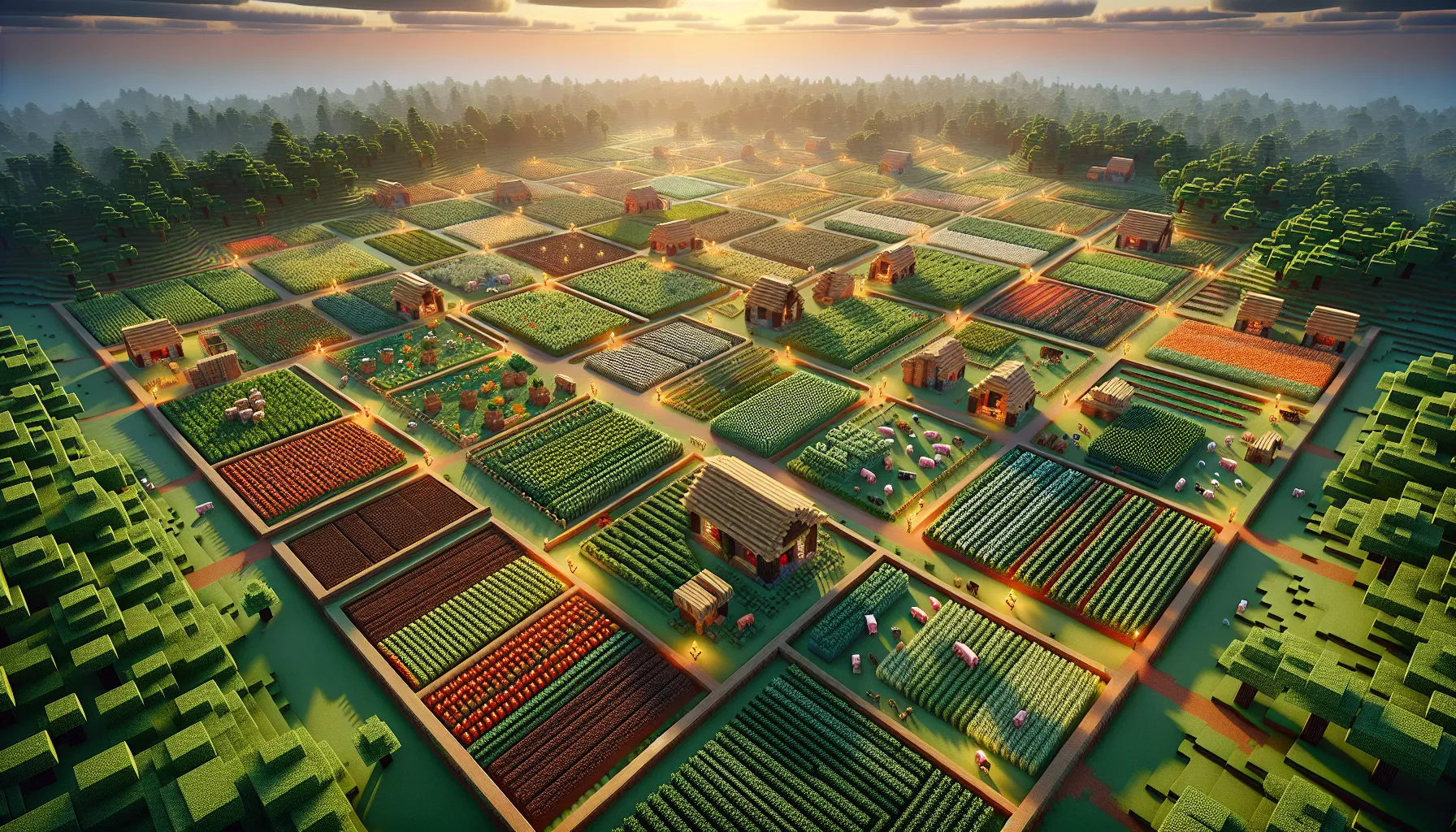Table of Contents
ToggleIn the pixelated world of Minecraft, players often find themselves knee-deep in crops, animals, and the relentless grind of resource gathering. But what if there was a way to sit back and let the magic happen? Enter automatic farms—where efficiency meets creativity, and players can finally kick back with a virtual lemonade while their crops grow themselves.
Overview of Minecraft Automatic Farms
Automatic farms in Minecraft streamline resource gathering and crop management. Players design these setups to cultivate food, materials, and other resources effortlessly. Various types of automatic farms exist, each catering to specific needs. Crop farms, for example, specialize in planting, growing, and harvesting crops like wheat, carrots, and potatoes.
Some automatic farms utilize redstone mechanics to automate tasks. Redstone, a versatile material, enables players to create mechanisms that trigger actions like planting and harvesting. For instance, observers detect changes in crop growth, activating dispensers or pistons to collect the harvest instantly.
Animal farms also benefit from automation. Players can use feeding systems to spawn and breed livestock, leading to a steady supply of meat, eggs, or wool. These farms reduce manual labor while ensuring a constant resource flow.
Storage systems enhance efficiency in automatic farms. Players can connect hoppers to collection points, funneling harvested resources directly into chests. This process eliminates inventory management issues, allowing players to focus on expanding their farms and exploring the game world.
Lastly, the integration of various farming techniques leads to advanced setups. Combining crop, animal, and resource farms showcases the game’s complexity while maximizing yields. Players often share designs online, fostering a community dedicated to innovation in automatic farm technology.
Benefits of Automatic Farms
Automatic farms in Minecraft provide significant advantages that enhance gameplay. Players enjoy increased effectiveness in resource management and a more streamlined gaming experience.
Resource Efficiency
Automatic farms maximize resource efficiency by reducing waste. Crops like wheat, carrots, and potatoes grow without player intervention. Observers detect growth stages, leading to timely harvesting. This process minimizes crop loss and ensures full yields. Additionally, hoppers collect harvested goods directly, eliminating unnecessary trips to storage. Players access a continuous supply of resources without engaging in repetitive tasks, allowing them to focus on other in-game activities. Other automated systems can also manage animal breeding and harvesting, ensuring resource availability.
Time-Saving Advantages
Time-saving advantages significantly improve overall gameplay. Automating farming tasks frees up hours typically spent on manual labor. With automatic farms, players engage in complex projects or explore new regions instead of constantly tending to crops. This efficiency promotes creativity and exploration, adding depth to the gaming experience. Players can refine their farms further by combining designs to create multifunctional setups. The result? More time for creativity and strategic planning, allowing for an enriched gaming environment.
Types of Automatic Farms
Automatic farms in Minecraft come in various forms, each serving unique purposes for players. These farms automate different tasks, enhancing efficiency in gameplay.
Crop Farms
Crop farms focus on growing essential food sources like wheat, carrots, and potatoes. Redstone mechanics, including observers, monitor growth stages to trigger planting and harvesting processes. When crops reach maturity, automatic systems collect produce, ensuring optimal yield with minimal player intervention. Players can design these farms in several configurations, ranging from simple setups to intricate designs that maximize output. Efficient use of water and light further enhances crop growth and resource availability.
Animal Farms
Animal farms enable players to manage livestock without constant attention. Feeding systems automatically deliver food to animals, supporting breeding routines and ensuring a sustainable population. Players can create pens that contain multiple animal types, facilitating diverse resource gathering from meat to wool. Automation in these farms significantly reduces time spent managing animals while increasing overall resource acquisition. Optimized designs often include collection hoppers to gather products, simplifying inventory management.
Mob Farms
Mob farms are designed to generate and collect resources from hostile and passive mobs. Players construct these farms in specific areas to maximize spawn rates, utilizing dark spaces or specific biome features. Automated killing mechanisms, like traps or water canals, enable efficient mob farming. Loot generated from mobs can include rare items and materials necessary for advanced gameplay. These farms offer players a steady supply of resources, reducing the need for manual hunting and enhancing their gaming experience.
Key Components of Automatic Farms
Automatic farms rely on essential components that ensure efficient operation and resource management. Understanding these key elements enhances players’ farming experiences.
Redstone Mechanics
Redstone mechanics play a vital role in automation within Minecraft farms. This flexible material acts as wiring, transmitting signals for various actions. Players use redstone to create systems that detect crop growth, triggering timely harvesting. For instance, observers can be placed adjacent to crops, automatically initiating the harvesting process when crops reach maturity. Additionally, pistons can push or pull blocks, assisting in gathering harvested items. Implementing these features minimizes manual labor while maximizing efficiency, allowing players to focus on other game activities without compromise.
Water Flow Mechanisms
Water flow mechanisms are critical for effective irrigation in automatic farms. Water serves as a natural resource that hydrates crops, ensuring optimal growth rates. Players often position water channels strategically, providing coverage for multiple crop rows. When aligned correctly, this flow also facilitates the transportation of harvested items. Creating a funneling system directs crops into collection points, reducing loss during harvest. By utilizing water flow efficiently, players enhance productivity and streamline operations, transforming their farming setups into efficient, automated systems.
Popular Automatic Farm Designs
Automatic farm designs in Minecraft range from simple setups to complex systems. Each design caters to different player skill levels and resource needs.
Simple Designs for Beginners
Beginner-friendly automatic farms often include basic crop setups. Wheat farms serve as an excellent starting point. Players can use a water flow system to push fully grown crops into a collection area. Adding a few observers and pistons simplifies the process, allowing for effortless harvesting. Carrot and potato farms mimic this design. By utilizing redstone mechanics, players can create a fully automatic cycle for planting and gathering resources. These designs help players understand the mechanics of automation without overwhelming complexity.
Advanced Designs for Experienced Players
Experienced players enjoy creating intricate automatic farms that maximize efficiency. These designs often feature multi-layered crop systems, enabling simultaneous harvesting of various crops. Implementing advanced redstone mechanisms, such as timers and clock circuits, allows more precise control over operations. Some players integrate mob farms into their designs by using passive and hostile mobs for resource generation. Connecting hoppers and chests streamlines storage, eliminating the hassle of inventory management. Utilizing these advanced systems can greatly enhance resource output and provide a steady supply of materials for crafting and building.
Conclusion
Automatic farms revolutionize the way players engage with Minecraft’s farming mechanics. By leveraging redstone technology and innovative designs, these systems provide a seamless experience that maximizes resource efficiency. Players can enjoy a steady supply of crops and materials while focusing on exploration and creativity.
The variety of automatic farms available caters to different needs, whether it’s crop cultivation, livestock management, or mob farming. This versatility encourages players to experiment and share their designs, fostering a vibrant community dedicated to enhancing gameplay. With automatic farms, Minecraft enthusiasts can truly elevate their gaming experience, freeing up time for more adventurous pursuits.




